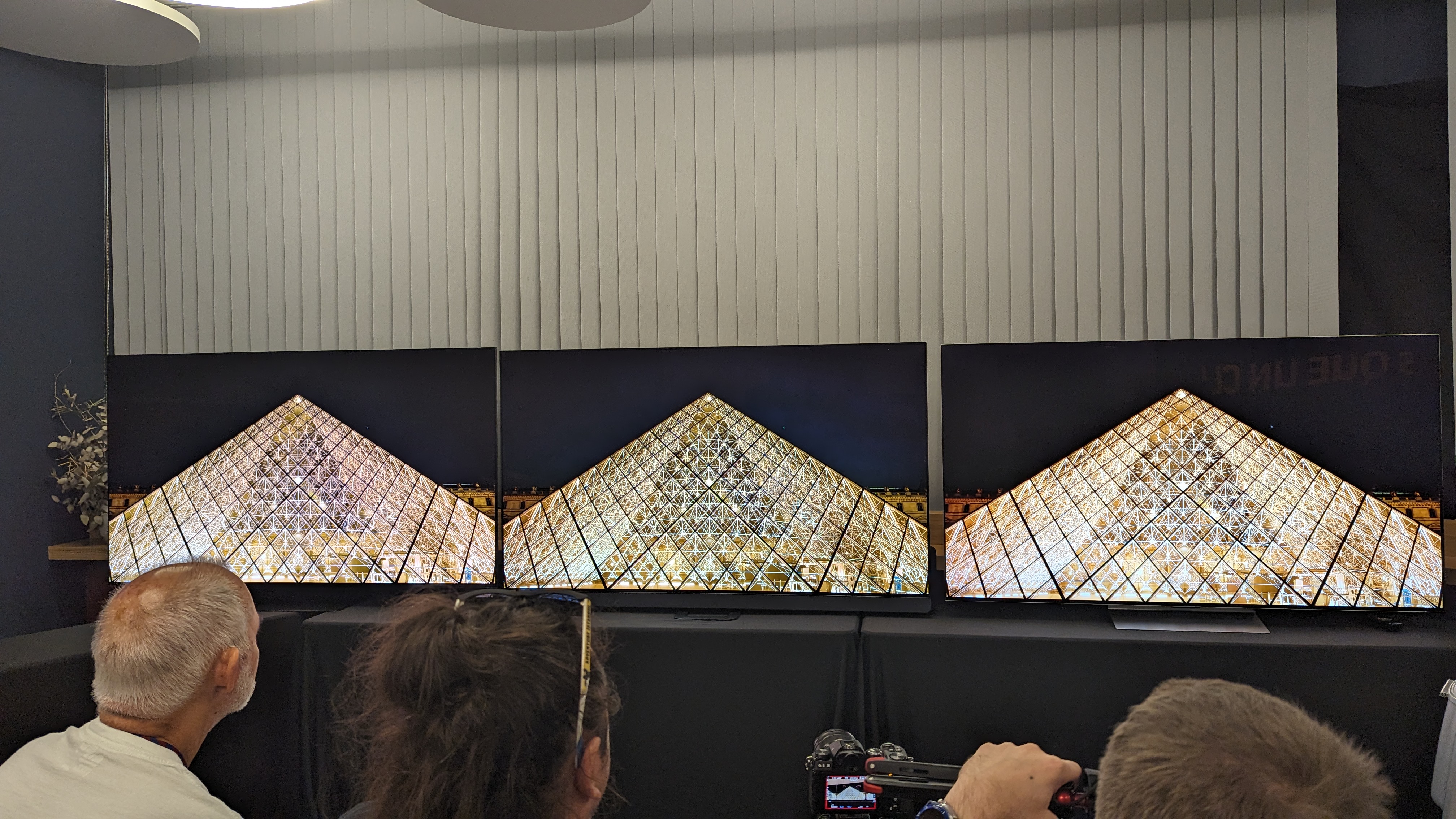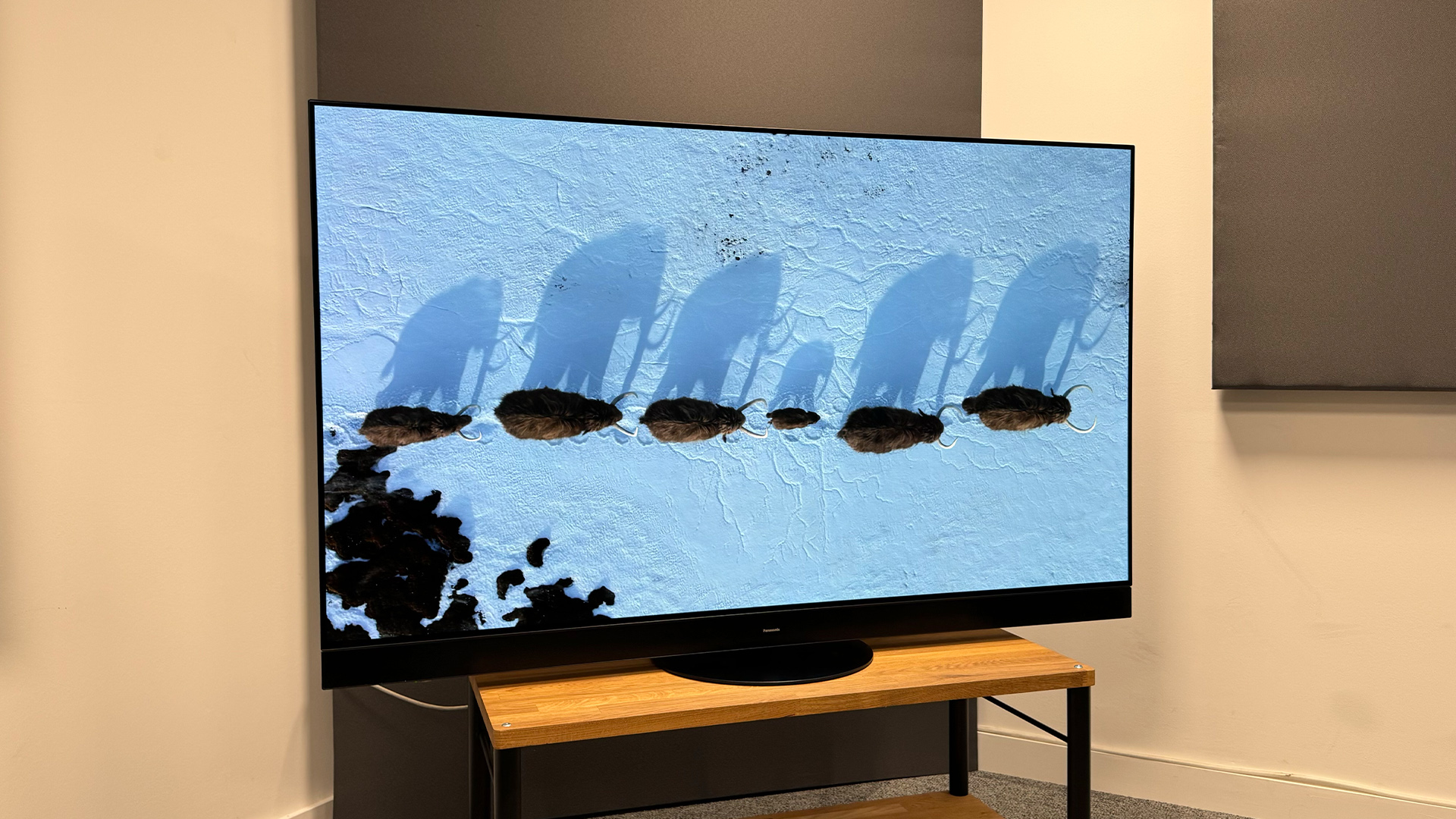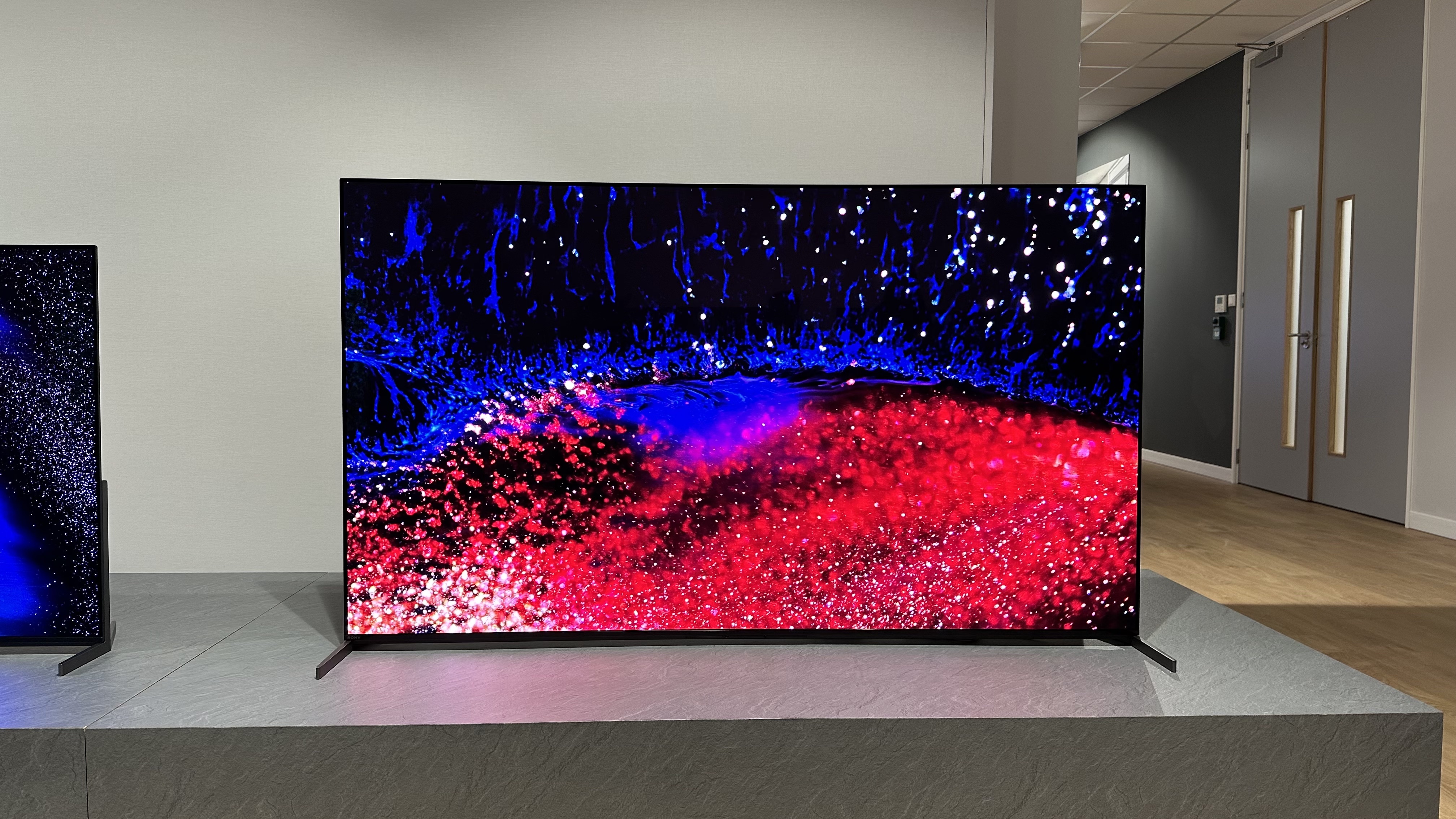
Progress isn't always straightforward. While OLED panels brought many benefits to the table when they launched – including razor-thin TV sets and absolute black levels – they also have their share of downsides, one of which is a lack of brightness when compared with the brightest backlit TVs. That could leave us in the odd situation where a top-of-the-range OLED TV was often nowhere near as bright as an older, cheaper LCD TV.
But not anymore. OLED TVs have made great strides in this area of late, courtesy of two technologies: Micro Lens Array (MLA) and QD-OLED. They both make for stunningly bright pictures without compromising the TV's slim dimensions or black levels. But which is best?
That's what we're here to decide. Let's weigh up the pros and cons of both and see which is right for you.
What is MLA?

MLA stands for Micro Lens Array. It involves placing a layer of microscopic lenses on top of the standard OLED screen's pixels. The term 'microscopic' isn't just hyperbole – you can cram 5000 microlenses onto a single pixel.
These serve to increase the screen's brightness. Numbers in excess of 2000-3000 nits have been bandied around, whereas prior to this, peak levels were around the 1000-nit mark. (These figures apply to small peak highlights, as opposed to the picture as a whole, which is more likely to be around 1500 nits with MLA TVs).
One of the main reasons OLED TV manufacturers haven't cranked up the brightness is the fear of burn-in (where an image becomes indelibly marked on the screen.) MLA seeks to avoid this, by not working the OLED panel harder – instead, the microlenses focus the light that's already being emitted. The OLED panel suffers no extra stress, hence there's no increased risk of burn-in.
The results speak for themselves. The Panasonic MZ2000 (one of the first generation of TVs to feature MLA) goes fantastically bright, and puts its extra nits to very good use. Watching Pan, a film mastered in 4000 nits (which is beyond even the abilities of the MZ2000), the Panasonic TV tone maps the highlights to avoid making them appear over-exposed and blown out. It's also "significantly brighter and more impactful" than the step-down MZ1500 model, we noted in our review.
MLA is even more impressive in the second-generation LG G4. Here, the "added contrast gives the picture a wonderful three-dimensional feel, with characters looking suitably separate and removed from the background, while objects hold a wonderful sense of depth," we noted in our review.
But it's not the only brightness-boosting tech in town...
What is QD-OLED?

Samsung's QD-OLED technology takes a slightly different approach. It seeks to utilise the Quantum Dots of Samsung's QLED tech, but without the LED backlight.
The quantum dots used in QLED TVs convert white light into coloured light without any loss of energy in order to boost brightness while also improving colour volume. QD-OLEDs cover OLED's self-emissive pixels in a layer of quantum dots, with each comprised of red, green and blue subpixels. This negates the need for a separate colour filter, as on traditional OLED TVs (also referred to as WOLED, with the W standing for White). Because the traditional colour filter tends to detract from the pixels' brightness, doing away with it makes for brighter images.
The idea is to combine all the benefits of OLED (absolute black levels, wide viewing angles, extremely slim panels making for thinner TV sets) with a brighter picture. QLEDs haven't been able to rival OLEDs in terms of black levels, but QD-OLEDs can.
Like MLA, QD-OLED TVs are a relatively recent phenomenon, launching in 2023. One of the most impressive implementations is the Sony A95L. This TV's "additional brightness and colour vibrancy over the A80L and even the MLA-boosted Panasonic MZ2000 are immediately clear in the first scene's streetlamps and headlights [in Pan], which are reproduced with a more intense and accurate yellow glow," we wrote in our review.
"The moon over London, meanwhile, is not only brighter on the A95L, but it also has some subtle pink shading and lots of texture detail that is missed by rivals. This is precisely the sort of picture element that QD-OLED is designed to excel at."
The A95L's QD-OLED panel doesn't lose any black depth either, with an impressive amount of detail in murkier scenes (skin tones are a particular highlight).
In bright scenes, the A95L has bolder colours than a standard OLED, and it manages to go slightly brighter than the MLA-boosted Panasonic MZ2000. It also outdoes the MZ2000 for colours when greater brightness is called for.
This is true of other QD-OLED TVs, too. In our review, we found that the Samsung S95D manages a wider range of granular colours during a sunset in Pan than does the LG G4, despite the G4 offering marginally brighter peak highlights. But this is only really noticeable with very bright HDR content.
MLA vs QD-OLED: which is better?
Does that mean that QD-OLED is the superior technology? Not necessarily. While the QD-OLED TVs we've tested do offer better colour volume and a wider colour gamut than their MLA rivals in super-bright parts of the picture, much of this is due to the picture processing each TV uses. MLA in turn theoretically boasts slightly wider viewing angles than both traditional OLED and QD-OLED, but it's not something we've noted in our testing.
That's why, when choosing a new TV, it's important to see how it performs in real-world testing, instead of just looking at the spec sheet. Each individual TV will have different picture processing abilities to go with their respective screen technologies, and that's before we start factoring in other aspects such as price, operating system and audio. (There's a lot more to a TV than just screen tech.) Some models of TV perform very differently at different sizes even, with larger models usually proving brighter than the same model in a 48- or 42-inch variant.
But now you know what QD-OLED and MLA technologies do, and what to look out for. Before you buy a new TV, make sure you check out our full review.
MORE:
OLED vs QLED: which is better?
LG G4 vs Samsung S95D: what are the differences between these 2024 OLED TVs?
Best TVs: brilliant budget to premium 4K Ultra HD







